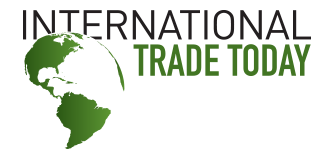Customs Brokers' Type 86 Reasonable Care Insufficient, CBP Official Says
A CBP headquarters official, chosen to help shape national policy on de minimis, said that while the trade community welcomed the opportunity for electronic clearance of packages that require partner government agency review, importers are often not following the reasonable care standard required for Type 86 entries. The Type 86 test is for packages that are low enough value to avoid duties under the de minimis statute, but are not eligible for de minimis because they contain goods that PGAs inspect. If importers participate in the test -- and there were more than 623 million packages last fiscal year that were covered -- they must provide a 10-digit Harmonized Tarff Schedule code.
James Moore, program manager, cargo and conveyance security at CBP, said that customs brokers filing those HTS codes are not asking the right questions of their customers, not like they do for formal entries.
"There is overwhelming negligence in the Type 86 environment, particularly in the classification of things," he said during a webinar hosted by the North Country Chamber of Commerce as part of its International Trade Week 2024.
He said packages have been labeled as "gift," "necessities" or just with the number 9, but still have a 10-digit HTS classification. He said the consignee is sometimes "unknown," "present" or "Mickey Mouse." Since de minimis eligibility is determined per person, there has to be a real consignee.
He said they're also facing a problem of master carton smuggling, where one box will be labeled for a consignee, "daily necessities," and when CBP opens it, officers find 100 individually labeled packages with different consignees. The vast majority of the time, those interior packages contain narcotics, he said.
De minimis is CBP's highest risk environment, and yet the one with the least data -- and often, the data that is provided is misleading, Moore said.
Still, Moore said the idea of restricting de minimis doesn't necessarily make CBP's job easier. "It just means I shifted that problem to another type of entry that’s coming in," he said.
Moore said that although 88% of the 1 billion de minimis packages came via air, the number coming by truck from Canadian or Mexican fulfillment centers continues to increase. Four years ago, the number of de minimis packages that came over the land borders by truck was less than 97 million; last fiscal year, it was 170 million.
"There are only so many truck booths that are currently built," he said, and showed a picture of a truck with many boxes on a loading dock. He said a truck with 10,000 boxes inside might have five or 10 identified by CBP as needing a hold. In the case in the photo, he said, it took five CBP officers and the driver three hours to find the suspicious packages.
Moore said 1 billion de minimis shipments annually "wouldn’t be such a big deal if they were all legitimate shipments."
"We used to see a lot of fentanyl directly from China" in small packages, he said, but that has shifted. Now it's pill presses, molds, precursor chemicals, which are shipped across the border to Mexico.
He said 81% of intellectual property rights violations, 78% of agricultural violations and 77% of narcotics seizures are among de minimis packages. The weight of drugs seized in seagoing shipments and at the land borders is much larger, but by the number of detentions, de minimis dominates.



